It has been too long since I did a Sea Creature Sunday! Goodness time flies. I decided that with all the wonderful new footage from Okeanos, Nautilus, and other deep-sea vehicles today would showcase deep-sea squids!

Squid are classified in the Order Teuthida, which has about 300 extant species classified thus far. There does appear to be some needed reorganization of squid classification, and I’m sure there are numerous specimens yet to be described, but that’s a general issue with the taxonomy of many marine creatures. I’ll likely go into the taxonomy woes of Octocorallia soon, and you’ll understand what I mean!
Many people think of squid and then think of calamari, yet only a handful of species are commercially fished. These include Loligo and Heterololigo squid (pencil squid), Illex, and also Sepioteuthis (reef squid). Also, in Japan and Hawaii two genera from Pyroteuthidae are commonly fished. In general these squid are medium sized (50mm-40cm /0.12in-16in) and are found in shallow waters. The Humbolt squid is an exception to this, as they typically are found 200-700m deep and are much larger than most commercial fished species. Squid are known to be attracted to light, and fishermen will lure them into nets that way. Fishing activity can be so extensive it has been caught by satellite!
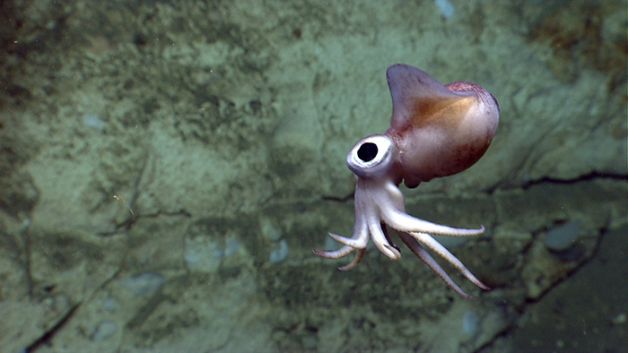
Deep-sea squid are less useful for fishing because they do not often migrate to the surface to feed, and some species, like the glass squid and the whiplash squid have incredibly fragile, soft bodies, which renders them difficult to catch, as well as inedible.
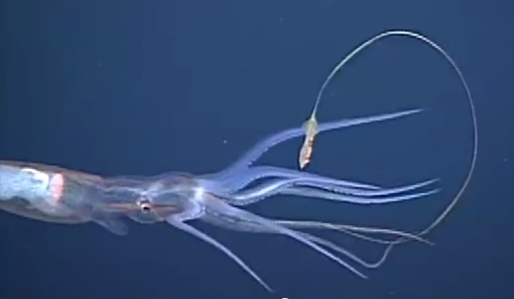
There is a diverse range of body types in deep-sea squid. One layout uses extra-long tentacles that act as a style of fishing line and lure. One species was ID’d by Prince Albert I of Monaco, who collected sperm whale regurgitations and identified squid species found within. Doesn’t that sound like regal fun?!? The species Grimalditeuthis bonplandi was finally seen in action by MBARI ROVs (Hoving et al. 2013), and you can see the long lure retracts into the rest of the tentacles.
You can also see how translucent the body of this mesopelagic organism is. That’s a form of protection from predators, making them hard to see.
Other species of this family Chiroteuthidae also have the long-lure tentacle, and Asperoteuthis acanthoderma has one four times (!) longer than its body (known as the mantle).

Another form of “fishing” squid are the big-fin squids of Magnapinna.
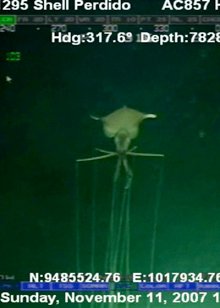
These squid have an incredibly evolved body plan with all of their tentacles elongated and the fins on the mantle exaggerated for buoyancy. Again, a live specimen of this genus had not been seen until 1988, and relative measurements were finally able to be seen in 2000 – and it was 7m (23ft) long! I’m also really jealous of this guy’s tattoo. Epic.
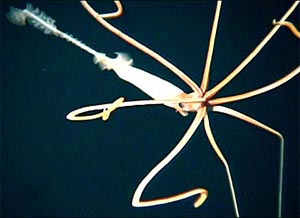
This small squid, Joubiniteuthis portieri, is the only species in its family, and also floats in mid-water with long tentacles extended. It appears to form a net to catch smaller organisms. The extended tail from the mantle probably helps with buoyancy and stabilization, but that has yet been confirmed.
Other deep sea squid are also nearly transparent, and the glass squid are a species group of the Cranchiidae that are specially adapted to be difficult to see. They also have a special chamber in their mantle filled with liquid ammonia which helps maintain buoyancy (notice the theme! Sinking = bad). You can understand why glass squid are typically not on the menu!
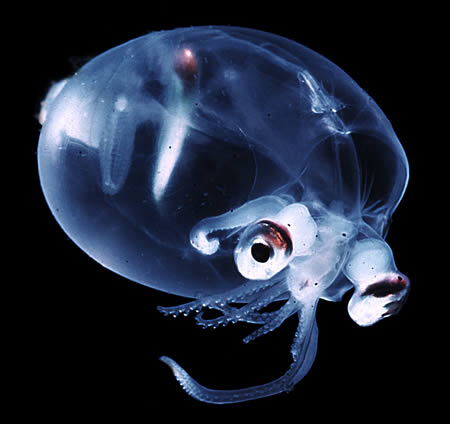
The ever-famous vampire squid also floats along and captures prey in in the folds of its tentacles, but the vampire squid is not actually a squid! Squid belong to the superorder Decapodiformes (meaning having 10 appendages) while vampire squid belong to the Octopodiformes, which also includes, you guessed it, Octopuses. Vampire squid are a different order than the octopus, but are still more closely related to the ultra-clever invertebrates than they are squid.
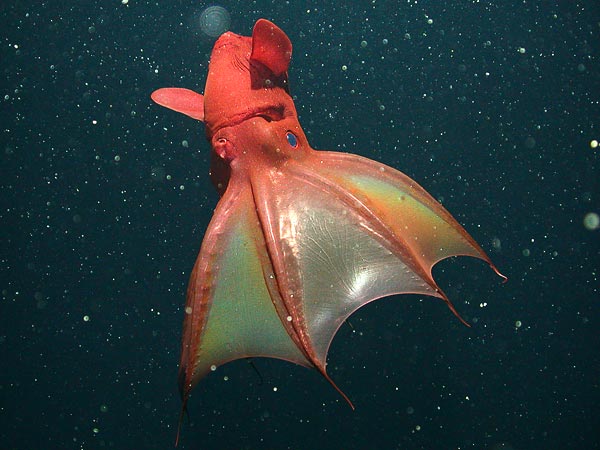
Finally, some deep-sea squid have relatively normal squid-like body plans, buy have other unique features, like dermal scales,

Differently sized eyes, as in the Cock-eyed squid of Histioteuthis

Or of course like being really, really big. The Giant Squid Architeuthis dux.
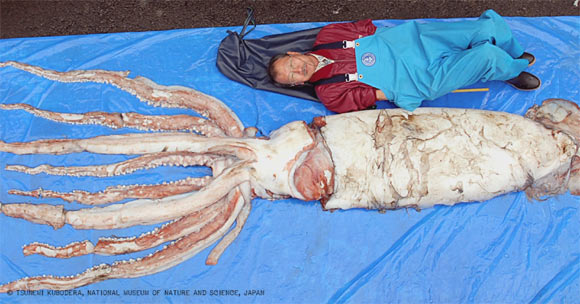
And the Colossal Squid Mesonychoteuthis hamiltoni.
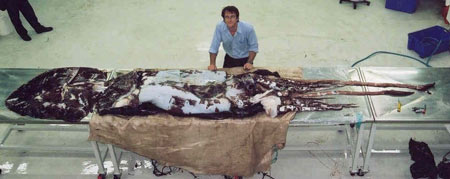
This one is on display at the Te Papa Natural History Museum in Wellington, NZ. I got to see it! Honestly the size is not the most terrifying thing about the Colossal Squid. Instead it’s the armored suction cups.
Whoa. Did you know the Colossal squid id actually larger than the Giant squid of Kracken fame? Yep.
Thus I leave you with this thought:
References:
Hoving, H. J., Zeidberg, L. D., Benfield, M. C., Bush, S. L., Robison, B. H., & Vecchione, M. (2013). First in situ observations of the deep-sea squid Grimalditeuthis bonplandi reveal unique use of tentacles. Proc. Roy. Soc. B., 280:1769.
Young, Richard E. 2009. Joubiniteuthidae Naef, 1922. Joubiniteuthis portieri Joubin, 1916. Version 11 September 2009. http://tolweb.org/Joubiniteuthis_portieri/19450/2009.09.11 in The Tree of Life Web Project, http://tolweb.org/
Young, Richard E. and Michael Vecchione. 2014. Lepidoteuthidae Pfeffer 1912. Lepidoteuthis grimaldii Joubin, 1895. The scaled squid. Version 21 January 2014 (under construction). http://tolweb.org/Lepidoteuthis_grimaldii/19833/2014.01.21 in The Tree of Life Web Project, http://tolweb.org/






